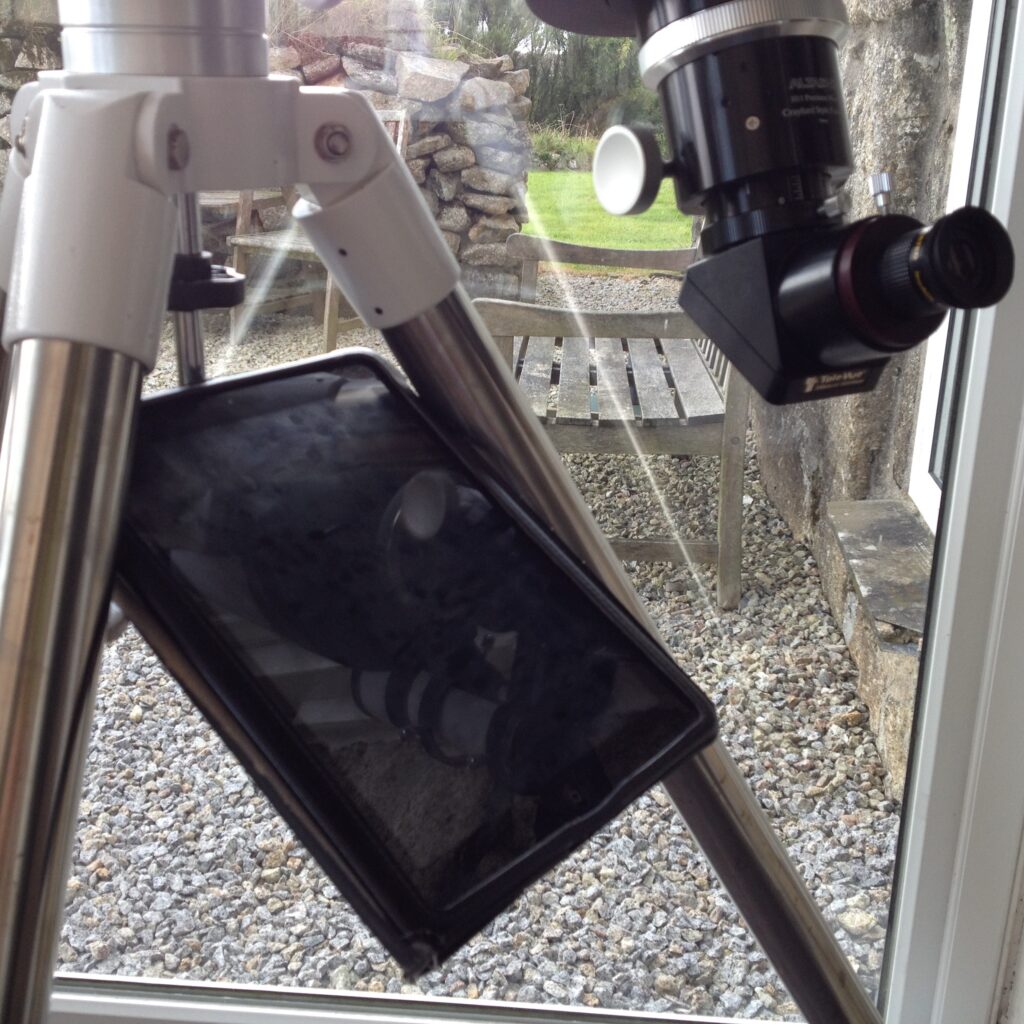Three observing sessions in under a week – it’s been a while since I had one of those.
The wind was a little too high to safely open up the DBO, so I dragged the Baby RC out for some star hopping.
I’m so glad I don’t have a Cassegrain design any more, as within 15mins, dew was dripping off the scope. A corrector plate would have dewed up almost immediately! Dealing with dew requires yet another bit of equipment such a hair dryer or purpose built dew heater, which then needs to be dragged outs as well. This rather defeats the object of a ‘grab and go’ scope, which the Baby RC is intended to be. The scope tube acts as its own dew shield and I didn’t have any problems through the session.
The dew shield on the Tetrad also works a treat – so I’m glad I paid the bit extra and fitted one. The same could not be said for the finder scope. Had I not replaced the cap after each use, that would have dewed up in minutes.
I think I have cracked this star hopping lark and found the whole process a doddle. For charting, I seem to have settled un the iPad with two versions of Skysafari running at the same time. I run Skysafari 3 in normal Alt/Az mode with a 5 degree FOV ring to match my finderscope. Once I have star hopped to where the target should be, I flick open SkySafari 4 which is set up with a vertically flipped view and a 0.8 degree FOV circle to match the view through the scope. Because the look between SkySafari 3 and 4 is so different, I always know which view is which – Simples.

I have also found that in its case, the iPad fits snugly between the two tripod legs and rests on the outer edge of the spreader bar, which seems to hold well enough with just gravity. The screen angle is also perfect when sitting and I can flick between eyepiece and iPad with the minimum of head movement.
Session Stats
- Date: 09/09/2015
- Time: 20:32 – 22:03 UT
- Seeing: III Somewhat Stable,
- Transparency: V Poor,
- Temp:14.2c,
- Pressure: 1012mb,
- Humidity: 86%,
- Dew Point: 7.4 ,
- Wind: 9mph,
- SQM: 18.4 mags/arcsecond,
- NELM: 5.3mag

The objects on the list were NGC6823, NGC6830, Harvard20, NGC6886 , NGC6838 (M71), NGC6853 (M27) and NGC6885 and Roslund 4.
NGC6886 and Rosland4 were not visible, but I correctly identified the star field.
This was my second visit to NGC6885 and the non existent NGC6882. Looking through the 152mm RC, the only obvious cluster is 10 arc/min in diameter and centred on a point 6 arc/min N/W of the bright star Vul 20. According to the historically corrected NGC list, this cluster is NOT NGC6885. NGC6885 is centred on Vul 20 but through this scope, nothing resembling a cluster is seen there. The same goes for by previous observation made through the 254mm RC made last year.
The area around Vul 19 to the North looked fuzzy and is where Skysafari and Skytools 3 plot NGC6882. However, this had the hallmark of atmospheric smearing of the star and certainly did not look like a cluster to me.
The more I read about NGC6885, NGC6882, Caldwell 37, Collinder 416 and Collinder 417, the more confusing the location and identification of any of these objects become. I’m sure I will be coming back to this subject again.